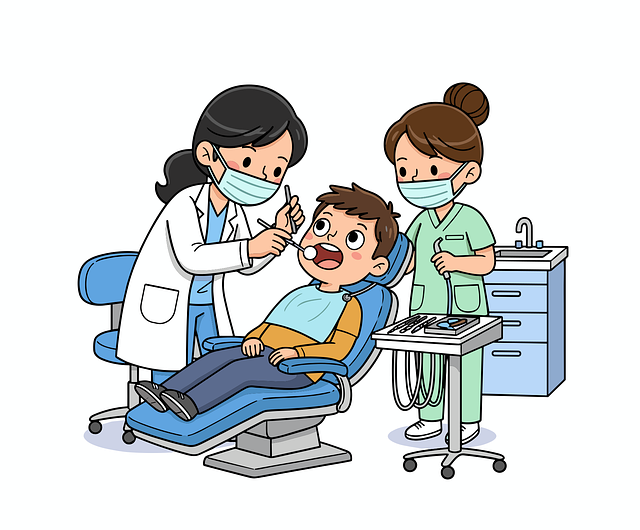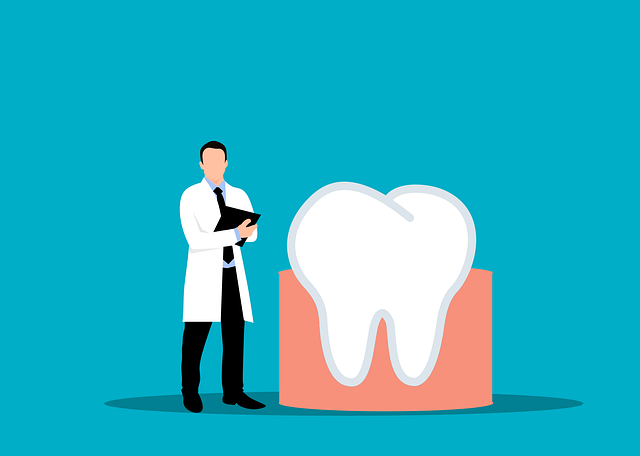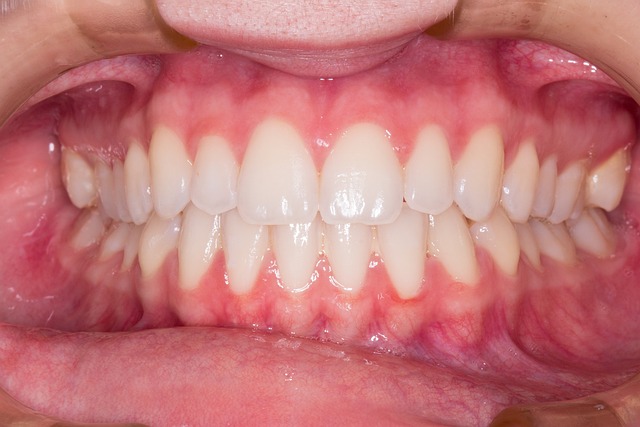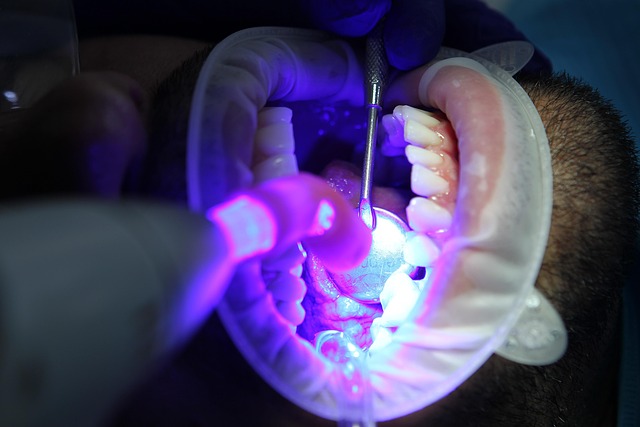McAllen Dentist Checkups: Your Smile’s Foundation

McAllen Dental emphasizes regular dental checkups every 6 months for adults, with older patients and…….
In the pursuit of optimal oral health, understanding the recommended frequency of dental checkups is paramount. This article delves into the significance of regular visits to the McAllen dentist, offering valuable insights into how often these essential appointments should occur. By exploring various facets, from global trends to technological innovations, readers will gain a comprehensive grasp of this topic, empowering them to make informed decisions regarding their dental care routine.
Definition: The term “how often should I visit a McAllen dentist for checkups” refers to the recommended interval between regular dental examinations and professional cleanings. It involves determining an optimal schedule to maintain oral health, prevent diseases, and address potential issues early on.
Core Components:
Historical Context: The concept of regular dental checkups has evolved over time, with increasing recognition of its importance in the 20th century. In the past, visits were primarily focused on treating problems rather than preventive care. However, modern dentistry emphasizes the proactive approach, leading to recommendations for routine checkups every six months or as advised by dental professionals.
Significance: Regular dental checkups are vital for several reasons:
The global impact of dental checkup frequency is substantial, with variations across regions influenced by cultural, economic, and healthcare systems differences.
| Region | Recommended Checkup Interval | Influencing Factors |
|---|---|---|
| North America (including the US and Canada) | Every 6 months | Higher disposable income, advanced dental care infrastructure, and a strong emphasis on preventive care. |
| Western Europe | Similar to North America, typically every 6 months | Comprehensive healthcare systems and a culture of regular dental checkups. |
| Asia-Pacific (including China and Japan) | Varies from 3-6 months | Cultural attitudes towards oral health vary, with some regions emphasizing preventive care more strongly. |
| Middle East and Africa | Generally less frequent, around every 9-12 months | Limited access to dental care in some areas and varying cultural practices. |
Trends Shaping Global Dental Care:
Market Dynamics: The dental care industry is a significant global sector, with the frequency of dental checkups influencing market trends and revenue streams.
Investment Patterns: Dental professionals and investors recognize the value of establishing regular checkup routines, which can attract a stable patient population and ensure sustainable business growth.
Cost-Benefit Analysis: The economic argument for regular dental checkups is compelling. While there are initial costs involved in these visits, preventing significant dental issues can lead to substantial long-term savings for both patients and dental practices.
Technological innovations have revolutionized dental care, improving efficiency and patient experiences during checkup appointments.
Future Potential: The future holds even more promise for technological advancements in dentistry:
Government policies and regulations play a crucial role in shaping the landscape of dental checkup frequency and overall oral health care.
Key Policies:
Legislative Frameworks: International organizations like the World Health Organization (WHO) provide guidelines and recommendations for oral health practices, emphasizing the importance of regular dental checkups in disease prevention. These guidelines influence national policies, fostering a more uniform approach to dental care worldwide.
Despite the widely recognized benefits, some challenges and criticisms exist regarding the recommended frequency of dental checkups:
Proposed Solutions:
Several case studies demonstrate the positive impact of implementing regular dental checkup routines:
Case Study 1: The Danish National Oral Health Program
Denmark’s national oral health program has been highly successful in promoting preventive dentistry. By providing free dental care to all citizens, including routine checkups and educational initiatives, Denmark boasts one of the highest levels of oral health globally. This program’s emphasis on early intervention and community engagement has led to reduced tooth decay rates and improved overall oral health awareness.
Case Study 2: Community Dental Clinics in Rural India
In rural areas of India, where access to dental care is limited, community-based clinics have been established to provide regular checkups and educational programs. These initiatives have significantly improved oral health outcomes, especially in children, by addressing the unique challenges faced by underserved populations.
Case Study 3: School-Based Dental Programs
Implementing dental programs within schools has proven effective in targeting young individuals. These programs not only educate students about oral hygiene but also provide free checkups and treatments. Research shows that early intervention through school-based programs can set the stage for a lifetime of good oral health habits.
The future of dental checkup frequency is poised for further evolution and refinement, driven by technological advancements and changing healthcare needs.
Potential Growth Areas:
Emerging Trends:
Strategic Considerations:
In conclusion, understanding how often one should visit a McAllen dentist for checkups is a crucial aspect of maintaining optimal oral health. Regular dental examinations and professional cleanings play a pivotal role in disease prevention, oral health preservation, and overall well-being. As global trends and technological advancements continue to shape the dental care landscape, the importance of personalized checkup routines remains unwavering. By embracing evidence-based practices and staying informed about emerging developments, individuals can make informed decisions regarding their dental healthcare needs.
Q: How often do I really need to visit a dentist for checkups?
A: The recommended interval is every 6 months for most adults. However, your dentist may advise more or less frequent visits based on your oral health history and individual needs.
Q: Can skipping dental checkups lead to serious issues?
A: Yes, consistent skipping of dental checkups can result in severe dental problems such as tooth decay, gum disease, and even oral cancer. Regular visits help catch issues early when they’re easier and less expensive to treat.
Q: What if I don’t have dental insurance? Is it still worth visiting a dentist?
A: Even without insurance, regular dental checkups are essential for maintaining good oral health. Many dental offices offer sliding scale fees or community programs for those without coverage. The benefits of preventive care outweigh the costs in the long run.
Q: How do I know if my child needs to start seeing a dentist?
A: Children should visit a dentist by their first birthday or when their first tooth appears. Regular checkups help establish good oral hygiene habits early on and prevent problems like tooth decay, which can be especially damaging in children.
Q: Are there any signs I should look out for that indicate an urgent dental visit?
A: Yes, immediate attention is required if you experience severe pain, swelling, bleeding, or pus around the teeth and gums. These could be indicators of serious infections or other urgent dental issues.

McAllen Dental emphasizes regular dental checkups every 6 months for adults, with older patients and…….

Understanding dental checkup frequencies involves considering age, oral health, and risk factors. Mc…….

Dental checkup frequencies vary based on age and individual needs. Recommended visits for adults eve…….

Maintaining optimal oral health in McAllen requires regular dental checkups every six months, as rec…….

Dr. Cazares, a McAllen dentist, promotes patient-centric oral care with a focus on preventive measur…….

Determining optimal dental checkup frequency in McAllen is crucial for oral health. While a twice-ye…….

Optimal oral health in McAllen requires personalized dental care. The American Dental Association re…….

Optimal dental health requires tailored care from McAllen dentists. Recommended checkup frequency: e…….

McAllen dentists provide personalized oral health plans tailored to individual risk factors, lifesty…….